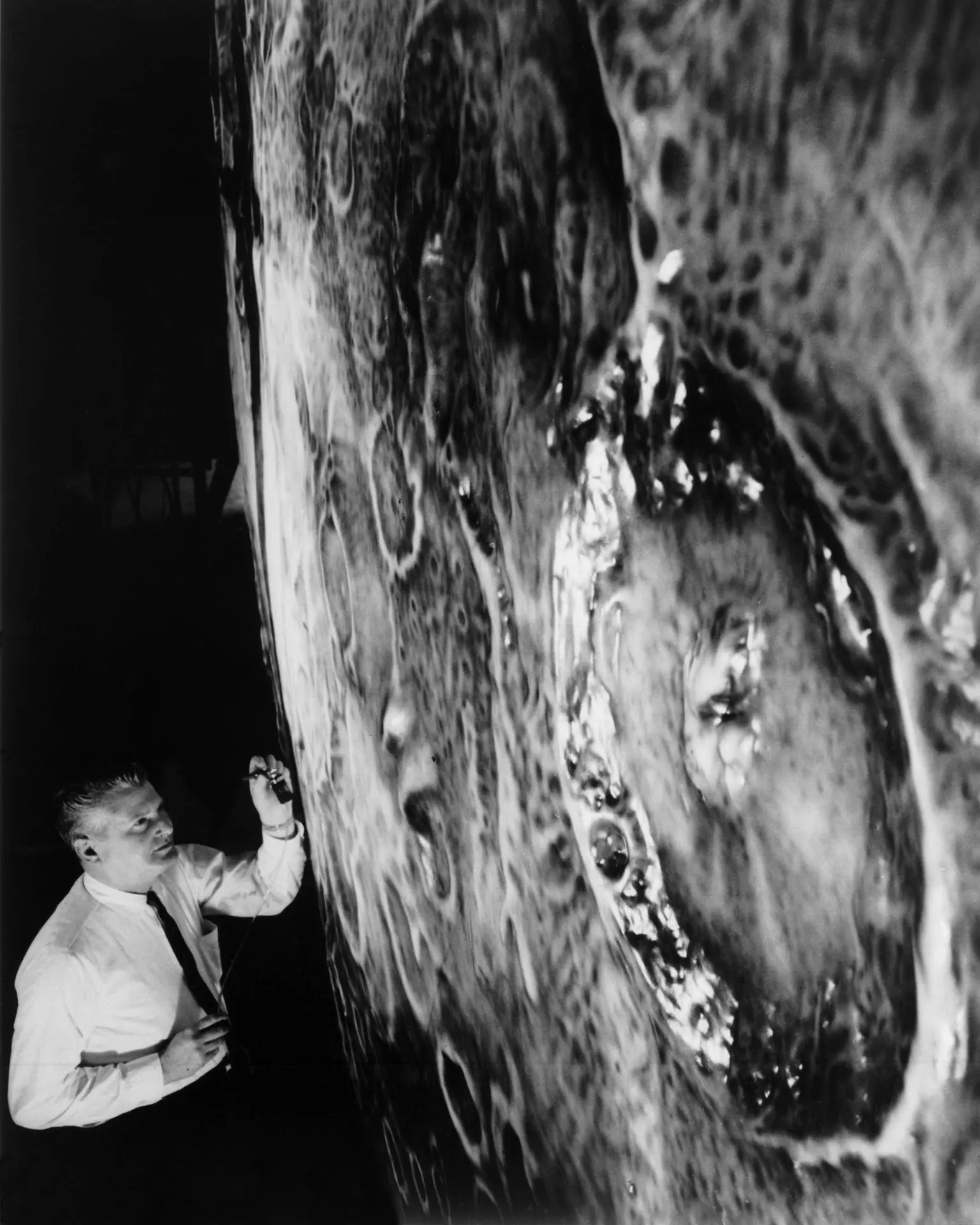An artist uses an airbrush to recreate the lunar surface on one of the four models comprising the LOLA, or Lunar Orbit and Landing Approach, simulator in this November 12, 1964, photo. Project LOLA was a simulator built at Langley to study problems related to landing on the lunar surface.
In “Spaceflight Revolution: NASA Langley Research Center From Sputnik to Apollo,” James Hansen wrote: “This simulator was designed to provide a pilot with a detailed visual encounter with the lunar surface; the machine consisted primarily of a cockpit, a closed-circuit TV system, and four large murals or scale models representing portions of the lunar surface as seen from various altitudes. The pilot in the cockpit moved along a track past these murals which would accustom him to the visual cues for controlling a spacecraft in the vicinity of the moon. Unfortunately, such a simulation–although great fun and quite aesthetic–was not helpful because flight in lunar orbit posed no special problems other than the rendezvous with the LEM, which the device did not simulate. Not long after the end of Apollo, the expensive machine was dismantled.”
Image Credit: NASA
在这张1964年11月12日的照片中,一位艺术家使用喷枪在组成LOLA(月球轨道和着陆方法)的四个模型之一上重现了月球表面。洛拉计划是兰利建造的一个模拟器,用于研究与登陆月球表面相关的问题。
在《航天革命:美国国家航空航天局·兰利研究中心从斯普特尼克到阿波罗号》中,詹姆斯·汉森写道:“这个模拟器的设计目的是为飞行员提供与月球表面的详细视觉接触;这台机器主要由一个驾驶舱、一个闭路电视系统和四个大型壁画或比例模型组成,这些壁画或比例模型代表了从不同高度看到的月球表面的一部分。驾驶舱中的飞行员沿着一条经过这些壁画的轨道移动,这将使他习惯于在月球附近控制宇宙飞船的视觉线索。不幸的是,这样的模拟——尽管非常有趣而且非常美观——并没有什么帮助,因为在月球轨道上飞行除了与登月舱会合之外并没有带来什么特别的问题,而登月舱并没有模拟这个问题。阿波罗结束后没多久,昂贵的机器就被拆除了。”
影像来源:NASA







